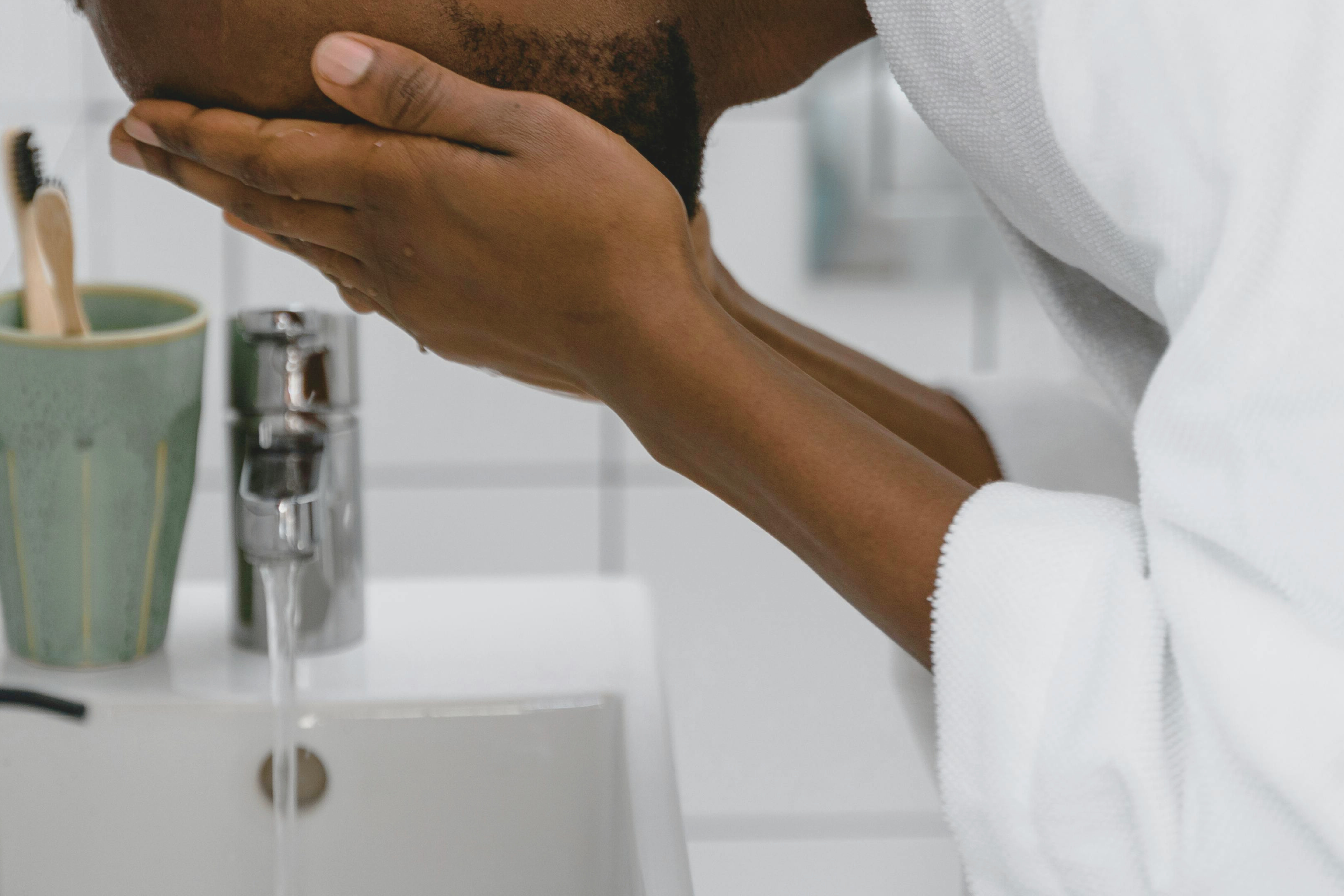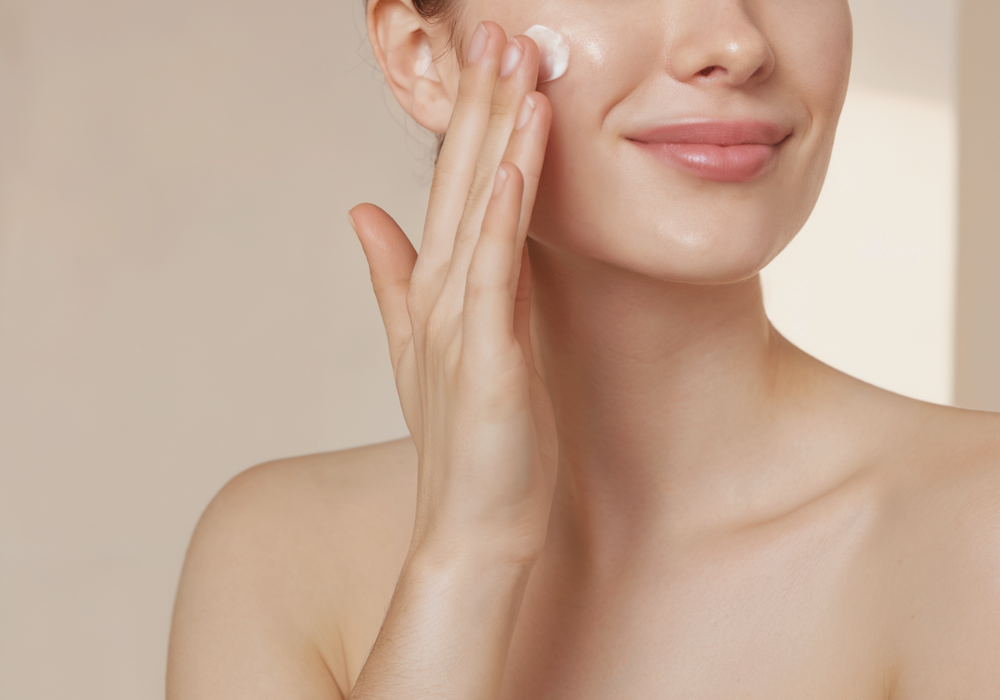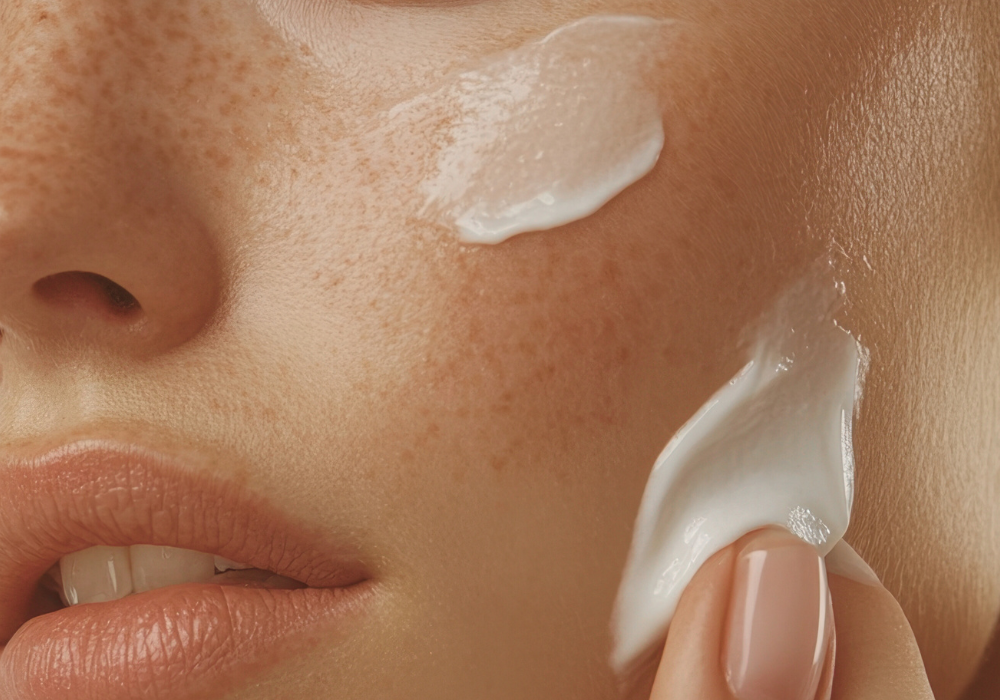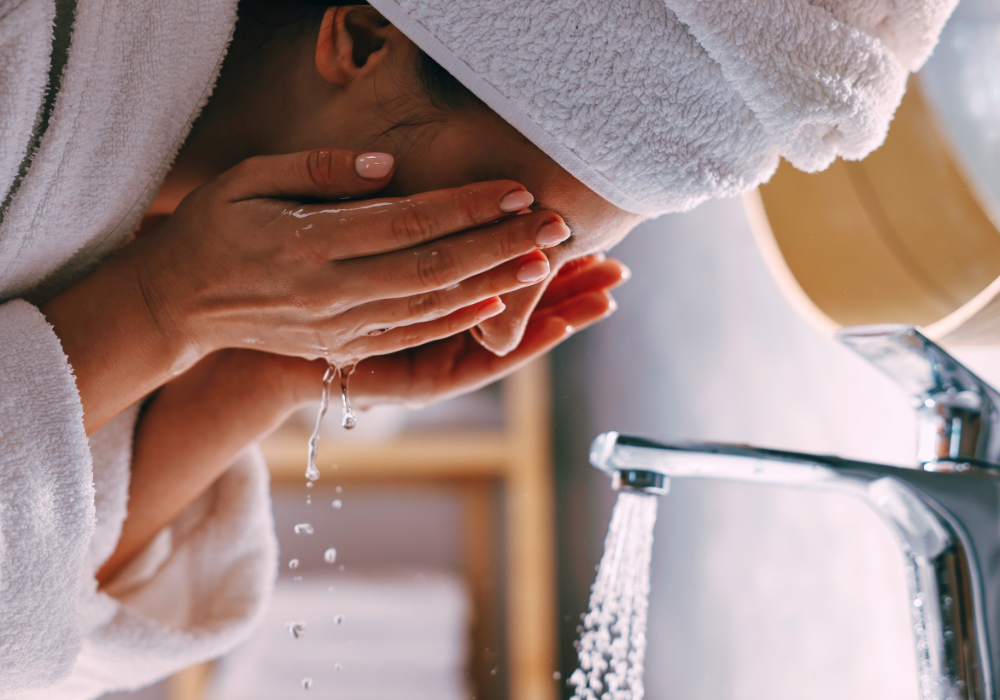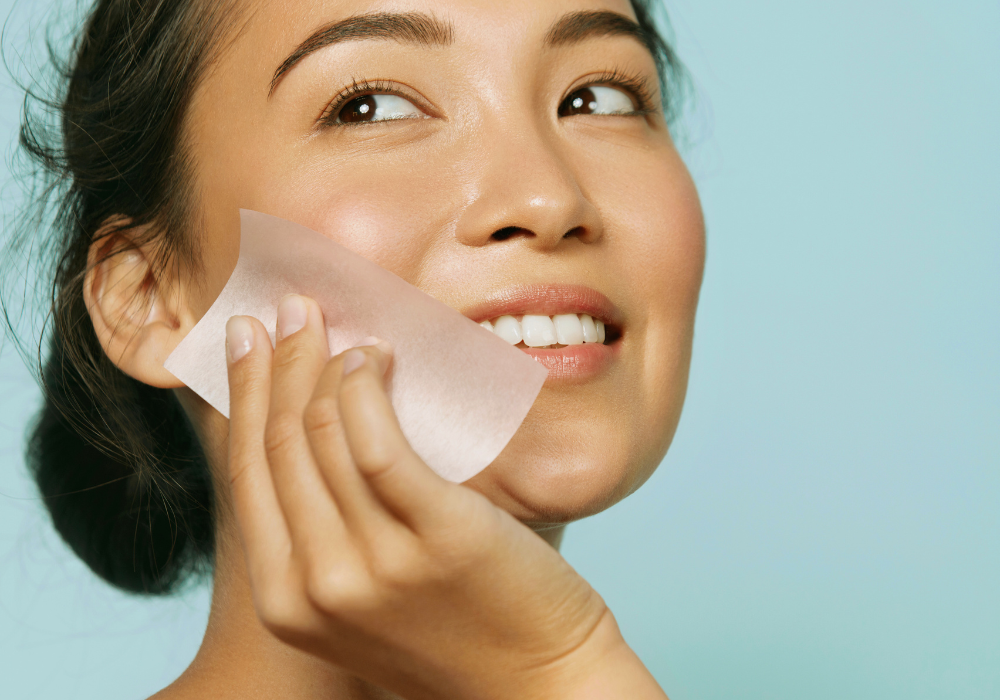Pharrell Williams has made headlines for years—not just for his music and fashion, but for looking virtually ageless. The core of his approach is simple: cleanse, exfoliate, moisturize, and stay consistent. Pharrell began working with dermatologist Dr. Elena Jones more than two decades ago, and that partnership laid the groundwork for a science-backed daily cleanser routine that prioritizes skin health over complicated multi-step rituals.
What makes Pharrell's routine stand out is its focus on fundamentals. Consistent daily skincare can improve hydration, texture, and visible skin quality. His three-product system—a rice powder cleanser, enzyme exfoliator, and humidifying cream—reflects this balance between effectiveness and simplicity.
The science backs up this approach. Protection, prevention, cleansing, and moisturizing are the key components of an effective skincare routine. Daily skincare routines potentially have the most significant long-term impact on the overall quality of a person's complexion. Whether you're dealing with oily skin, dry patches, or just want to maintain healthy skin, understanding Pharrell's principles can help you build a routine that actually works.
Key Takeaways
-
Consistency matters more than product count—daily cleansing, exfoliation, and moisturizing form the foundation of effective skincare
-
Chronic UV exposure is the primary preventable cause of premature skin aging, making sun protection non-negotiable
-
Individual skin type determines product selection—what works for oily skin may not suit dry or sensitive complexions
-
Visible improvements in skin texture typically appear within 8 to 12 weeks of consistent product use with evidence-based actives
-
Multifunctional products that combine cleansing, exfoliation, and hydration simplify routines without sacrificing results
Why Pharrell Williams's Ageless Skin Has Everyone Talking
Pharrell Williams looks remarkably youthful for his age, and people want to know why. The answer isn't a single miracle product or secret treatment—it's a methodical approach to skincare built on proven science and consistent habits.
A cosmetic chemist's analysis of Pharrell's routine found it "looks like a pretty good routine for oily skin" with advice that "isn't totally off-base, which is pretty rare." This matters because most celebrity skincare claims fall apart under scientific scrutiny.
What sets Pharrell apart is his long-term commitment. After working with Dr. Elena Jones for over twenty years, he developed a routine based on dermatological principles rather than trends. This consistency delivers visible results—the kind that prevent aging signs rather than just treating them after they appear.
His approach also highlights an important reality: skincare needs are individual. The types of products a person may want to include or avoid depend on many factors, such as age, underlying health conditions, and skin sensitivity. What works well for one person may not work well for another.
The real lesson from Pharrell's routine is that preventative care, started early and maintained consistently, yields better results than reactive treatments later.
The Core Principles Behind Pharrell's Skincare Philosophy
Pharrell's skincare philosophy centers on a few core ideas: start early, stay consistent, protect first, and keep it simple.
Start Early and Stay Consistent
Dermatologists recommend starting sun protection and basic skincare early in life and maintaining it long-term. Pharrell's two-decade partnership with his dermatologist reinforces this approach.
Daily routines have the most significant long-term impact on overall complexion quality. This means showing up every morning and every night, not just when skin problems arise.
Consistency builds habits that prevent aging signs. Research advocates for using a relevant daily routine as it demonstrates visible skin benefits over a short period, while driving the creation of habits for the prevention of aging signs.
Core consistency habits:
-
Cleanse twice daily—morning and night
-
Exfoliate 2-3 times per week
-
Apply moisturizer after cleansing
-
Never skip sun protection during the day
Starting early allows skin to maintain its natural resilience. Waiting until visible aging appears makes correction harder than prevention.
Protection First, Treatment Second
Sun protection ranks as the single most important skincare step. Dermatologists recommend daily use of broad-spectrum SPF 30+ sunscreen to help prevent photoaging and skin damage.
Dermatologists widely recommend mineral or chemical sunscreen for protecting against wrinkles, redness, and premature aging. Daily SPF use is the most evidence-based intervention for preventing visible skin aging.
Treatment comes after protection. Once you've shielded skin from environmental damage, active ingredients like exfoliants and retinoids can address existing concerns.
Pharrell's approach reflects this priority order: cleanse to remove impurities, protect with appropriate products, then treat specific issues like texture or oiliness.
Essential Skincare Routine Steps Every Man Should Follow
A functional men's skincare routine breaks down into four main steps: cleanse, exfoliate, hydrate, and protect. Each step serves a specific purpose in maintaining skin health.
Morning Routine Framework
Step 1: Cleanse to remove overnight oil and dead skin cells
Step 2: Hydrate with a lightweight moisturizer or multifunctional product
Step 3: Protect with SPF (non-negotiable for daytime)
Morning routines should be quick—3 to 5 minutes—and focus on protection. Cleansing twice daily removes buildup and helps prevent blemishes and acne, and it also primes your skin to absorb skincare products.
The morning cleanse doesn't need to be aggressive. A gentle formula that balances oil without stripping skin sets up better product absorption.
Evening Routine Framework
Step 1: Cleanse to remove dirt, sweat, and environmental pollutants
Step 2: Exfoliate (2-3 times per week, not daily)
Step 3: Treat with targeted serums or actives if needed
Step 4: Moisturize to lock in hydration overnight
Evening routines can be slightly more involved because skin repairs itself during sleep. This is when exfoliation and active ingredients deliver the most benefit.
Cleansing before exfoliating is key: sweeping away surface debris allows exfoliators—chemical and physical—easier access to the dead skin cells they have the power to remove.
Step 1: The Right Way to Cleanse Your Face
Cleansing forms the foundation of any skincare routine. Done correctly, it removes impurities without disrupting skin's natural balance. Done poorly, it can lead to dryness, irritation, or breakouts.
Why pH Balance Matters for Men's Skin
Skin naturally sits at a slightly acidic pH of around 4.5-5.5. This acidity supports the skin's protective barrier and maintains a healthy microbiome.
Many traditional soaps have a pH of 8 or higher, which can disrupt this balance. Over time, alkaline cleansers compromise barrier function and lead to sensitivity.
pH-balanced cleansers maintain skin's natural acidity while still removing excess sebum, bacteria, sweat, dirt, and other grime. Cleansing helps remove these accumulations that can clog pores and contribute to acne.
The Kipi Exfoliating Daily Cleanser is formulated at skin's natural pH (4.5-5.5) with triple-action hydroxy acids, charged hyaluronic acid, and Pro-vitamin B5. This combination cleanses, exfoliates, and hydrates in one step without disrupting the skin's microbiome.
For men with oily skin, acne involves increased follicular keratinization—retention of dead skin cells that can clog pores. A pH-balanced cleanser with chemical exfoliants helps manage this excess cell turnover without over-stripping.
Common Cleansing Mistakes to Avoid
Using water that's too hot: Hot water strips natural oils and can cause redness. Lukewarm water works best.
Scrubbing too aggressively: Physical scrubbing can irritate skin. Harsh physical scrubs can disrupt the barrier; gentler chemical exfoliants are often better tolerated.
Cleansing only once daily: Morning cleansing removes overnight oil; evening cleansing removes environmental buildup. Both matter.
Using harsh, stripping formulas: If skin feels tight after cleansing, the product is too harsh. A good cleanser leaves skin comfortable, not squeaky.
Skipping the neck: Cleanse face and neck together. Neck skin shows aging just as much as facial skin.
The right technique matters: massage a nickel-sized amount onto damp skin in circular motions for 20-30 seconds, then rinse thoroughly and pat dry. This timing allows cleansing agents to work without over-processing skin.
Step 2: Exfoliation for Smoother, Clearer Skin
Exfoliation removes dead surface cells that make skin look dull and contribute to clogged pores. When a buildup of overdue skin cells occurs and the skin's major processes slow, it can show up as dull skin tone. By ensuring cell turnover runs on schedule, the skin barrier functions well, and skin looks healthy.
Understanding Hydroxy Acids
Chemical exfoliants use acids to break down the bonds between dead skin cells. Three main types serve different purposes:
Alpha Hydroxy Acids (AHAs): Water-soluble acids that work on the skin's surface. Citrus fruit extracts and glycolic acid brighten complexion and gently exfoliate.
Beta Hydroxy Acids (BHAs): Oil-soluble acids that penetrate into pores. Salicylic acid refines skin texture and removes debris trapped in pores—especially useful for oily and acne-prone skin.
Polyhydroxy Acids (PHAs): Larger molecules that exfoliate more gently. Gluconolactone exfoliates and hydrates simultaneously, making it suitable for sensitive skin.
AHA and BHA exfoliants have both shared and varying benefits: all kinds of chemical exfoliants smooth the skin, reduce the look of fine lines and wrinkles, help even out skin tone, hydrate, and restore radiance.
The Kipi Exfoliating Daily Cleanser contains a 2.4% triple-action hydroxy acid blend: 1% alpha-hydroxy acid complex from citrus fruits, 0.4% beta-hydroxy acid (salicylic acid), and 1% gluconolactone (PHA). This combination provides comprehensive exfoliation without the harshness of physical scrubs.
How Often Men Should Exfoliate
Exfoliation frequency depends on skin type and product; for many, 2-3 times per week is sufficient after cleansing. Daily exfoliation with harsh products can lead to unwanted skin redness and irritation.
That said, gentle chemical exfoliants in a well-formulated daily cleanser can be used more frequently than harsh physical scrubs. The key is the concentration and pH of the acids.
Signs you're exfoliating too much:
-
Persistent redness or sensitivity
-
Skin feels raw or stings with product application
-
Increased dryness or flaking
-
Breakouts from a compromised barrier
Signs you need more exfoliation:
-
Rough, bumpy texture
-
Dull appearance even after moisturizing
-
Clogged pores and blackheads
-
Products sitting on skin's surface instead of absorbing
Starting slowly is smart. Remember to start slowly to avoid irritating or drying out your skin, and avoid using exfoliants on days you use retinol or other retinoids (the combination can be a bit harsh).
For men using a multifunctional cleanser with chemical exfoliants, daily use may be tolerable for some skin types if the formula is pH-balanced and concentrations are moderate—but monitor for irritation and reduce frequency if redness or stinging occurs.
Step 3: Hydration and Moisture Retention
Hydration keeps skin plump, smooth, and resilient. When skin is properly hydrated, it retains more moisture, which helps maintain its suppleness and elasticity. Increased water intake can improve skin hydration; evidence for directly reducing wrinkles or sagging is limited, but proper hydration supports overall skin health.
Why Hydration Isn't Just for Dry Skin
Every skin type needs hydration—even oily skin. The confusion comes from conflating "hydration" (water content) with "moisture" (oil content).
Oily skin can still be dehydrated, which actually triggers more oil production as the skin tries to compensate. Proper hydration helps regulate sebum production and keeps skin balanced.
A study on skin hydration found that participants showed consistently improved superficial and deep hydration, with changes in the group with lower initial water consumption being significantly greater.
Internal hydration matters too. The U.S. National Academies recommend total daily water intake of ~2.7 L for women and ~3.7 L for men (including all beverages and food). Adjust your intake based on activity level, climate, and individual needs.
But topical hydration delivers more direct skin benefits. Ingredients like hyaluronic acid, glycerin, and natural sugars bind water to the skin's surface and help maintain hydration levels throughout the day.
Advanced Hydration Technology
Next-generation hydrating ingredients go beyond basic humectants. Charged hyaluronic acid has been engineered to enhance the binding of water molecules to the skin for effective hydration.
The Kipi Exfoliating Daily Cleanser contains 0.1% charged hyaluronic acid and moisture-locking natural sugars that form a hydrating matrix on the skin's surface. This optimizes water reserves and improves barrier function for immediate and long-term hydration.
Pro-vitamin B5 (panthenol) at 1% concentration soothes skin and supports the skin barrier, helping to lock in moisture and prevent transepidermal water loss.
These ingredients work synergistically. While hydroxy acids exfoliate, charged hyaluronic acid and panthenol ensure that the newly revealed skin cells stay hydrated and protected.
Gentle cleansing and regular moisturization can improve dry, irritated skin and support barrier health. This demonstrates that the right hydrating cleansing routine delivers measurable results.
For men looking to cleanse and hydrate skin effectively, choosing a multifunctional product that handles both tasks saves time without compromising results.
Frequently Asked Questions
What products does Pharrell Williams use in his skincare routine?
Pharrell uses a three-product Humanrace system he developed with dermatologist Dr. Elena Jones: rice powder cleanser, lotus enzyme exfoliator, and humidifying cream. The formulations are vegan, fragrance-free, and focus on gentle exfoliation paired with hydration.
Can men use the same skincare products as women?
Yes. Skin needs are based on individual type (oily, dry, sensitive) and concerns, not gender. Men's skin tends to be thicker and oilier, but fundamental requirements—cleansing, exfoliation, hydration, sun protection—remain the same for everyone.
How long before I see results from a new skincare routine?
Most improvements appear after 4 weeks (one skin cell turnover cycle). For significant concerns like hyperpigmentation or wrinkles, visible changes typically require 8-12 weeks of consistent use with evidence-based actives. Hydration improvements may show within days.
Should men with sensitive skin avoid exfoliation?
No, but choose gentler methods. Avoid strong retinols and high-concentration acids. PHAs like gluconolactone offer cell turnover benefits without irritation. Patch test new products, start with lower concentrations, and avoid combining multiple actives at once.
What's the single most important skincare habit for men?
Daily broad-spectrum SPF 30+ use. Chronic UV exposure is the primary preventable cause of premature aging. Even on cloudy days or indoors near windows, UV radiation breaks down collagen and accelerates all visible signs of aging.
